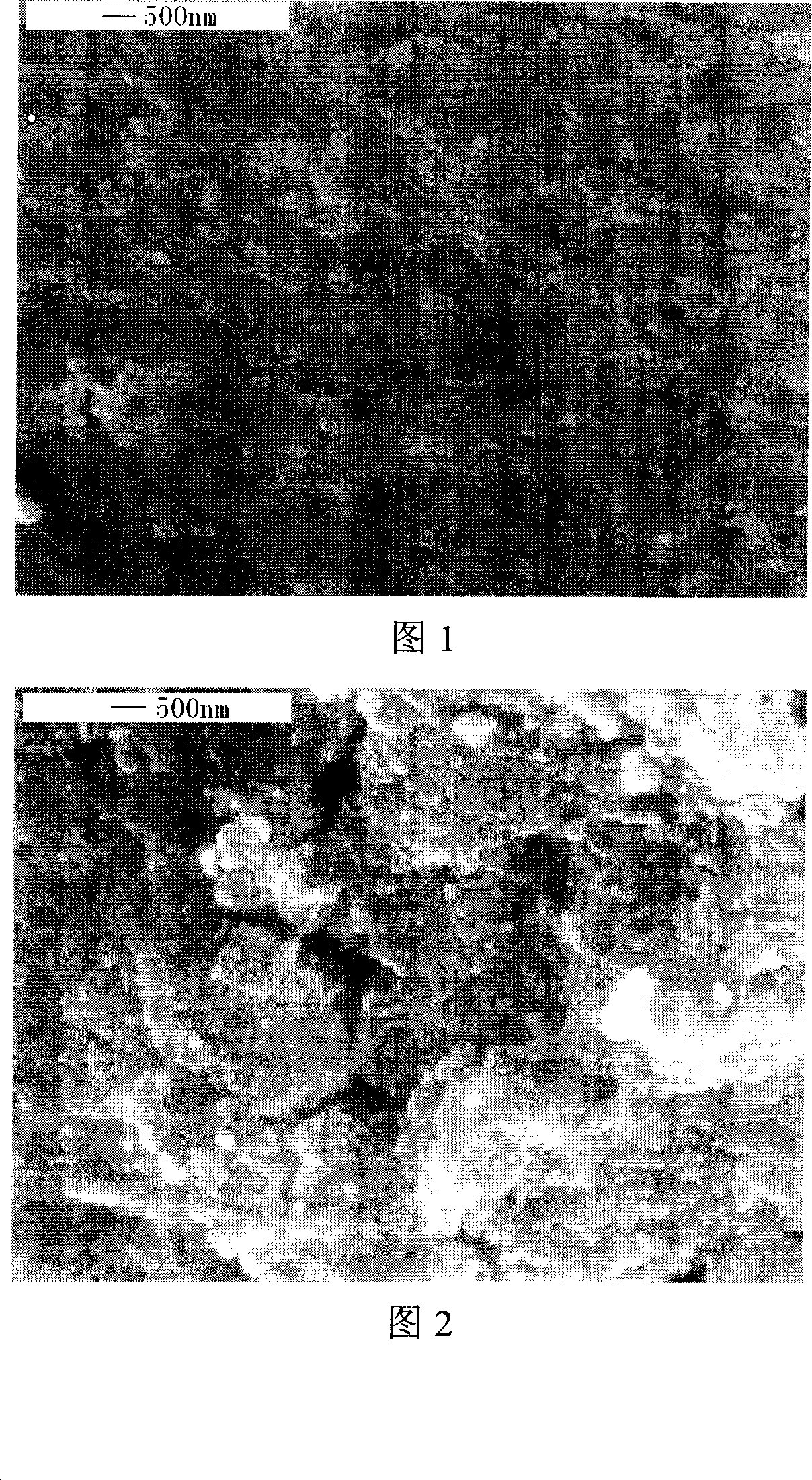Process for preparation of hydrogenation catalyst composition
A technology of hydrogenation catalyst and composition, applied in refining to remove heteroatoms, etc., can solve the problems of loss of activity, high content of catalyst metal, and no coordination effect of active metal found.
- Summary
- Abstract
- Description
- Claims
- Application Information
AI Technical Summary
Problems solved by technology
Method used
Image
Examples
preparation example Construction
[0019] The invention provides the preparation method of catalyst, a kind of concrete process step is as follows:
[0020] 1. Ni x W y o z Complex oxide precursors and MoO 3 Preparation of the mixture
[0021] A salt mixture containing active metal Ni and W components is prepared according to the proportion of catalyst components. Nickel-containing salts can be nickel sulfate, nickel nitrate, nickel chloride, basic nickel carbonate and the like. The tungsten-containing salt can be sodium tungstate, ammonium metatungstate, tungstic acid, etc. After mixing evenly, add concentrated ammonia water to the above mixture under stirring until a dark blue solution A is formed, and the pH value of solution A is 10.0-13.0. The weight concentration of ammonia water is generally 15% to 35%. A salt mixture material B containing additives (taking aluminum as an example) and auxiliary agents is prepared according to the content ratio of the catalyst components. The aluminum salt solutio...
Embodiment 1
[0032] Add 500mL of water into the dissolution tank 1, dissolve 28g of nickel chloride, then add 52g of ammonium metatungstate to dissolve, then add 25% ammonia water until a dark blue solution A is formed, and the pH of the solution is 11.0. Add 500mL of water into the dissolution tank 2, then add 64g of aluminum chloride to dissolve, and prepare acidic working solution B. Add 350mL of water into the reaction tank, and the temperature rises to 60°C. Under the condition of stirring, the solution B and 25% ammonia water were added into the reaction tank in parallel to form a gel. The gelation temperature was 60° C., the gelation time was 0.5 hours, and the pH value of the slurry during the gelation process was 9.0. Then add solution A into the reaction tank, raise the temperature to 80°C, distill ammonia for 2 hours, the pH value is 8.0, and age for 2 hours after gel formation. Then filter, add 600ml of clean water and 18g of molybdenum trioxide to the filter cake, beat and st...
Embodiment 2
[0034] According to the method of Example 1, according to the component content ratio of catalyst B in Table 1, nickel chloride and ammonium metatungstate are added to the dissolution tank 1, and then 30% ammonia water is added until a dark blue solution A is formed, and the pH value of the solution is is 12.0. Add aluminum chloride and zirconium oxychloride to the dissolution tank 2 to prepare acidic working solution B. Add 350mL of water into the reaction tank, and the temperature rises to 40°C. Under the condition of stirring, the solution B and 30% ammonia water were added into the reaction tank in parallel to form a gel, the gel forming temperature was 40°C, the gel forming time was 2 hours, and the pH value of the slurry during the gel forming process was 10.0. Then add solution A into the reaction tank, raise the temperature to 95°C, distill ammonia for 3 hours until the pH value is 7.5, and age for 1 hour after gel formation. Then filter, wash the filter cake twice w...
PUM
 Login to View More
Login to View More Abstract
Description
Claims
Application Information
 Login to View More
Login to View More - R&D
- Intellectual Property
- Life Sciences
- Materials
- Tech Scout
- Unparalleled Data Quality
- Higher Quality Content
- 60% Fewer Hallucinations
Browse by: Latest US Patents, China's latest patents, Technical Efficacy Thesaurus, Application Domain, Technology Topic, Popular Technical Reports.
© 2025 PatSnap. All rights reserved.Legal|Privacy policy|Modern Slavery Act Transparency Statement|Sitemap|About US| Contact US: help@patsnap.com

